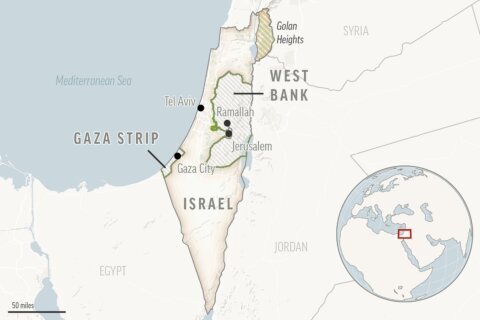The costs keep adding up — league fees, gear, travel — when it comes to youth sports in North America.
It’s a longtime issue exacerbated by inflation and hardly confined to the United States. The expense of playing youth hockey is one of the primary reasons cited by parents and others when discussing its decline in Canada.
“It just becomes increasingly more expensive for parents and families to play,” said Jon Solomon, community impact director of the Aspen Institute’s Sports & Society Program. “There’s sort of this haves versus have-nots that exist in youth sports, in terms of who can play and who can’t or get quality access.”
The institute’s most recent “State of Play” report, an annual study on national trends in youth sports, cited a survey finding 49% of respondents saying they had struggled to afford participation costs. That included 57% of respondents with less than a $40,000 annual income. Parents surveyed a year earlier said they spent more than $880 the previous year on their child’s primary sport in the United States; it was $1,645 (Canadian) north of the border.
Just this week, the Royal RBC Bank in Canada released an analysis that said the average cost of playing hockey in Canada costs $4,478 (Canadian) per child and that can vary widely depending on age and skill level; for 13- to 16-year-olds, the number was $7,371.
The rise of travel leagues — guaranteed tournaments and paid coaches for young athletes — has been fueled by parents eager to find a healthy outlet for their kids and many hoping against long odds to land a college scholarship. The growing number of programs comes with growing expenses, even at middle and high school programs.
The C.S. Mott Children’s Hospital at the University of Michigan has charted concerns going back at least a dozen years in its national polling on children’s health. According to the May 2012 report, 12% of responding parents said the cost of school sports had led to decreased participation for at least one of their children in middle or high school, while fewer lower-income families had a teen playing school sports compared to wealthier counterparts.
The report found that the average school pay-to-play fee was $93, while 21% of children faced fees of at least $150. The average cost for sports participation in that study was $381 when factoring in travel and other expenses. By the time of a broader March 2019 study on school activities, the average sports participation fee was $161 and the average cost of sports participation was $408.
Hockey differs from many sports in the amount of equipment needed. Soccer, basketball, swimming and volleyball tend to require fewer purchases to put a child in play. And while many manufacturers provide a wide range of pricing to ease the sticker shock of new equipment, it can be daunting.
A basic youth hockey stick — players need at least a few because they can and do break during practices and games — can cost around $70, with higher-end models — super light carbon fiber that somehow remains strong but pliable — going for three times that. New skates for the recreational player can be had for $100, with competitive players more likely in a pair costing some $500 or top-end models that are nearly $1,000.
Outfitting a goaltender, who have more pads and safety needs, can run more than $1,500 and is often much higher. Baseball catchers can relate; one organization estimated a typical youth catcher could have some $2,000 in equipment.
These are not a one-time costs. Legs and feet grow, pads and gloves become worn out, helmets become compromised.
Tom Cove is president and chief executive officer of the Sports & Fitness Industry Association, a trade group with membership that includes the four major North American professional men’s sports leagues as well as companies like Adidas, Nike, Wilson and Dick’s Sporting Goods. It also conducts industry research reports, including on sports participation.
Cove pointed to the popularity of college intramural sports as an example of options needed for youth sports beyond high-priced programs offering the promise of high-level training and travel.
“They like to play because they like to play, and that’s the whole goal,” Cove said of intramurals. “We should be doing a lot more of that from age 12 to 18, to create that opportunity. And that’s where the cost can really be a problem: It pushes out the people that aren’t the superstars and aren’t uniquely able to afford it.
“What we want to say is, you can’t make it either rec (leagues) or $10,000 a family with complete devotion to a sport and have nothing else to do in life,” Cove added. “There’s a lot more in between and we need to change the way we make it available and the way we talk about it.”
__
AP sports: https://apnews.com/hub/sports
Copyright © 2024 The Associated Press. All rights reserved. This material may not be published, broadcast, written or redistributed.







